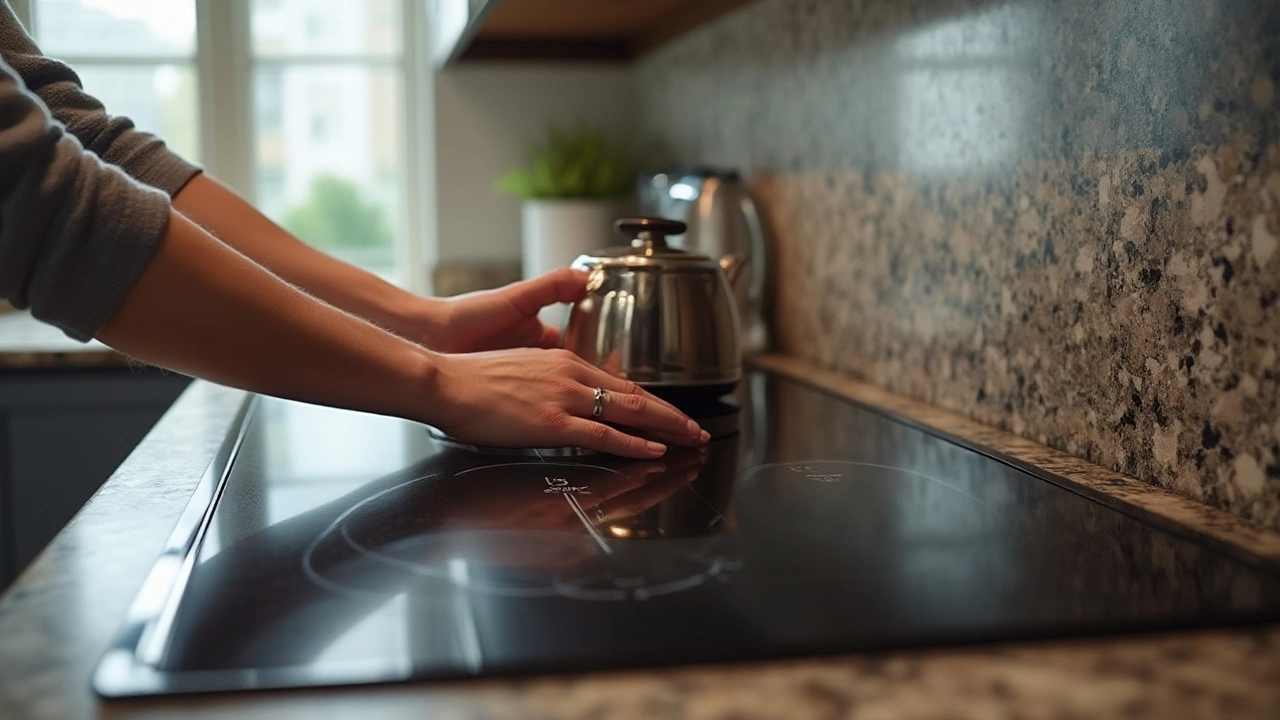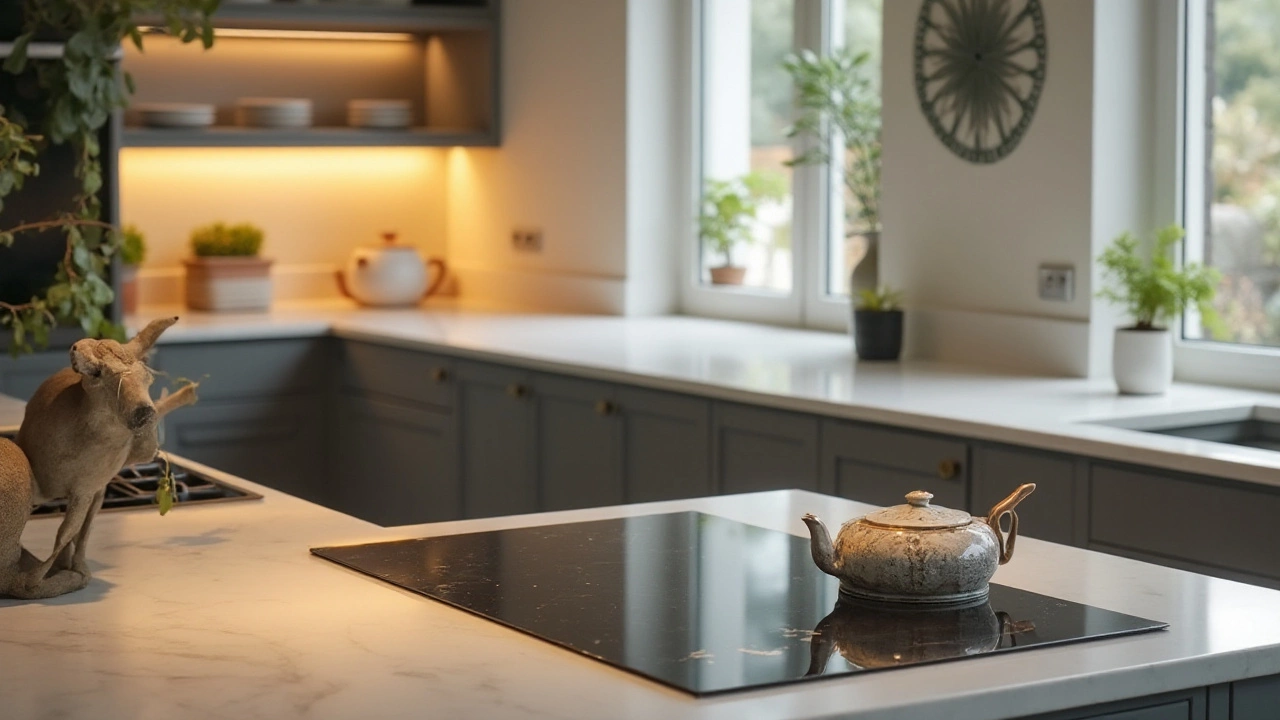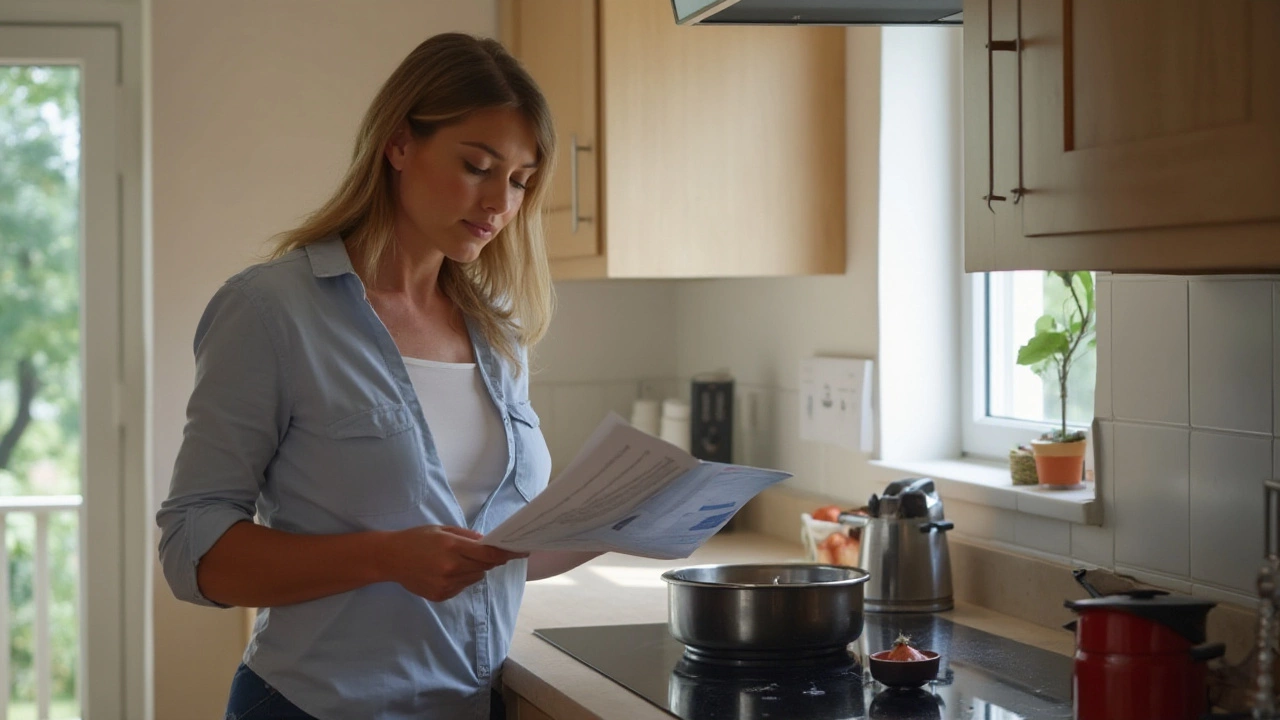
- 16 Nov 2024
- Gideon Thornton
- 0
Electric hobs have revolutionized the way we cook, merging high efficiency with sleek design. Yet, like all gadgets, they occasionally run into trouble. The thought of repairing an electric hob may seem daunting, but fear not. Whether it's a heating element or a simple electrical glitch, many issues can be resolved with some basic knowledge and a bit of patience.
Imagine preparing a hearty meal for your loved ones and realizing your hob won't heat properly. Before you panic, understanding the common problems that plague electric hobs can save you time and money. From a single burner not working to strange noises emanating from the unit, knowing what to look for is half the battle. This write-up aims to arm you with practical information, ensuring your kitchen remains the heart of your home, operating without a hitch.
- Understanding Electric Hobs
- Common Issues and Their Causes
- DIY Repair Tips
- When to Seek Professional Help
- Maintenance Tips for Longevity
Understanding Electric Hobs
The electric hob has become a cornerstone of modern kitchen design, celebrated for its ease of use and efficient heating capabilities. It's a far cry from its gas-powered predecessors, relying on electrical currents and advanced heating technology to provide precise temperature control at your fingertips. The concept of cooking with electricity began in the late 19th century, but it wasn't until recent decades that this technology gained widespread adoption due to improvements in safety and efficiency. In essence, an electric hob transfers energy through its heating elements, which, when powered, create the radiant heat necessary for cooking. These elements are often concealed beneath a smooth ceramic or glass surface, offering a sleek and easy-to-clean finish. Understanding how each component functions not only aids in effective use but also makes troubleshooting less daunting.
An insight into the different types of electric hobs can further enhance our grasp on the subject. Primarily, they are categorized into standard electric, ceramic, and induction hobs. Standard electric hobs are equipped with visible coils that heat up when electricity is passed through them. Meanwhile, ceramic hobs hide their heating elements under a smooth surface that glows red as it gets hot. Induction hobs operate quite differently; they use electromagnetic fields to directly heat the cookware without warming the hob surface itself. This method is lauded for its energy efficiency and rapid heating times. Electric hob repair can vary greatly depending on the type you own. While ceramic and standard models may require attention to elements and circuit issues, induction hobs can present unique challenges due to their advanced technology.
It's important to note that each type of hob requires specific maintenance to extend its lifespan. For instance, cleaning is a crucial task, and using abrasive cleaners on an induction or ceramic hob can cause irreparable damage. Moreover, employing the right cookware is vital; induction hobs necessitate magnetic pots and pans to function, which is a departure from traditional hobs.
"Regular maintenance is the key to longevity in any kitchen appliance," says Lynn Frederick, a noted expert in home appliances, "Understanding the wiring and elements of your hob can prevent costly repairs."A particularly crucial aspect to remember is that both ceramic and induction hobs continue to remain hot even after they've been turned off, posing a potential safety hazard if not monitored closely.
To wrap your head around the potential issues, it's helpful to acknowledge the typical lifespan and warranty terms associated with these appliances. An electric hob should typically last between 10 to 15 years with proper care, and most manufacturers offer a standard warranty of about one to five years. In case of malfunction, these warranties can be a saving grace, negating the need for costly out-of-pocket repairs. Many common issues such as single burner failures or temperature inconsistencies are often covered, but other problems might require professional intervention. It's always wise to familiarize yourself with your product's warranty to understand precisely what's covered. Knowledge is power, especially when it comes to maintaining and repairing your kitchen appliance.
Common Issues and Their Causes
Electric hobs are marvels of modern technology, yet like any piece of complex equipment, they aren't immune to glitches. One of the most frequent problems users encounter is a hob that simply refuses to heat. This can be particularly frustrating when you're halfway through preparing a meal. Such issues can often be traced back to a faulty heating element, which is the component responsible for generating heat. Sometimes, it could be as mundane as a loose wire causing this malady. However, it’s always prudent to check whether the power supply is stable or if you've overlooked the child lock feature typically integrated into newer models.
Another common hiccup is the irregular or partial heating of the cooking surface. Often, this can be linked to a malfunction within the temperature control switch. These switches modulate the voltage distributed to the heating elements. When they fail, it results in uneven heating or no heating at all, leaving you with partially cooked dishes, much to your chagrin. Additionally, sensor or switch malfunctions can occur when internal components dirty or suffer damage due to spillages that are left unchecked, which reminds us that regular maintenance is vital.
There’s also the issue of odd noises — clicks, hums, or beeps that you're unaccustomed to hearing from your appliance. While some sounds might be perfectly normal — like the click when turning the knob to switch on the hob — persistent unusual noises warrant attention. This could be symptomatic of electrical arcing or defective internal components. Insulation breakdowns often lead to these disturbances and highlight the necessity for professional inspection if DIY solutions don't rectify the situation.
"A watched pot never boils,” they say, but sometimes, it’s not impatience — it’s your hob," quips Jeremy Dobson, an experienced technician at KitchenMaster Appliance Repairs.
Service lights or error codes may illuminate on your electric hob’s control panel, signaling various issues from sensor failures to control board malfunctions. A misbehaving control board can affect the responsiveness of the hob's buttons or touch controls. This could arise if the board is subjected to overheating or experiences a short circuit. Delving into the owner's manual is your first step to decoding these signals, providing insights on basic troubleshooting before calling in experts.
Finally, tripped circuit breakers or blown fuses in your home’s main electrical panel can immobilize your hob completely. This is usually indicative of an overloading condition, where the hob demands more current than the circuit can provide. It's crucial to understand your hob's power requirements and ensure that your home’s circuitry matches the load specifications. As per a study by the Appliance Standards Awareness Project, monitoring and adapting electrical circuits in domestic spaces can significantly reduce the incidence of such disruptions. Knowing these common issues and their causes equips you with the foresight to keep your electric hob in running order.
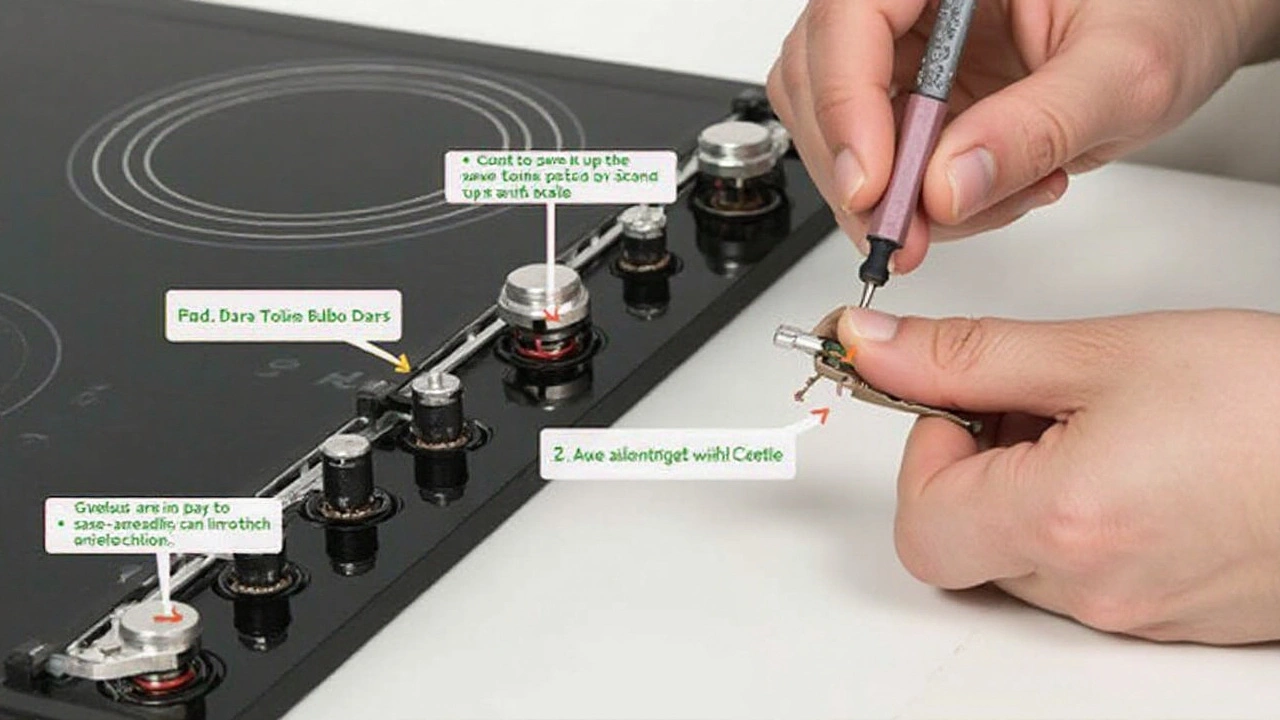
DIY Repair Tips
When tackling the repair of an electric hob, it's crucial first to understand its basic components. Every electric hob operates with a heating element or coil, a control switch, and a regulator, among other parts. If you notice that a specific burner is non-responsive, it may be due to burnout in the heating element, a common problem experienced by many users. Start by ensuring that your hob is completely turned off and cool before you do any troubleshooting and also remember to disconnect it from the power source to avoid any accidents.
Begin your investigation by checking the integrity of the heating element. Remove the element and inspect it visually for any signs of damage or burnout. If it's visibly damaged, replacing it might be the best option. This process involves buying a compatible part and following the manufacturer's guide, which makes replacement straightforward. Once the new element is secured in place, reassemble the hob, and test it to see if the issue has been resolved.
Addressing Control Switch Issues
Another frequent issue with electric hobs is a malfunctioning control switch. This switch often faces daily wear and tear, leading to eventual failure. If your burner stays on full power and refuses to adjust, this might be the root cause. Replacement or repair of the switch involves accessing the control panel, which can get intricate, so patience and precision are needed. Documentation from the manufacturer often provides valuable guidance for these repairs, transforming what seems like a daunting task into a manageable one.
Dealing with Electrical Connections
Sometimes the problem lies within the connections themselves. Loose or frayed wires can disrupt power flow, causing an erratic performance. In such cases, inspect the wires behind the control panel for any visible signs of distress. Tighten or replace any loose or exposed wiring to restore proper function. Often, issues at this level are fixable through simple adjustments or replacements. Be sure to use a multimeter to test the continuity of the wires and ensure your safety throughout the process.
"As handy as DIY repairs can be, it's important to remember that some situations might require professional intervention to ensure safety and functionality of your appliance." — Home Maintenance Experts
If after all these checks your hob still refuses to cooperate, it might be time to re-evaluate your approach or consult with a professional technician. Remember, while DIY methods offer a hands-on way to solve problems, they come with limitations, especially in more complicated malfunctions involving internal electronics or specialized components.
| Common Issues | DIY Solutions |
|---|---|
| Burner not heating | Check and replace the heating element |
| Control switch malfunction | Inspect the control and repair or replace |
| Loose connections | Secure wiring and check connections with a multimeter |
Embarking on a DIY repair journey with your electric hob can be rewarding, teaching you more about your appliance and helping you address minor problems without external help. As you gain confidence, these fixes become quicker and more intuitive, saving time and reducing the need for expert intervention.
When to Seek Professional Help
Your electric hob has been a reliable partner in your culinary adventures, but occasionally, it might face challenges that transcend typical DIY solutions. Recognizing when it's time to put down the tools and pick up that phone for professional assistance can save both time and unnecessary stress. Even with comprehensive knowledge and adept skills in appliance repairs, there are situations where an expert touch is indispensable.
One clear sign that you should seek assistance is persistent power issues. If your hob frequently trips the circuit breaker or doesn’t power on at all, it may indicate deeper electrical problems that need specialized testing equipment to diagnose and fix. Tinkering with electrical systems without the proper knowledge can be dangerous and may even void warranties. Professional technicians have the experience to safely handle these issues, ensuring that your kitchen remains safe and efficient.
Another scenario to consider calling in a professional is when the hob's heat isn’t distributing evenly. This could point to faulty internal components such as the thermostat, sensors, or even the hob's wiring. Attempting to replace these parts without experience can not only lead to further damage but might also increase the risk of injury. A respected quote reminds us,
"It is better to leave technical jobs to the experts, not just for safety, but for quality assurance,"illustrating the importance of expert handling in such cases.
Moreover, you should definitely seek help if there are strange noises coming from your electric hob. Buzzing or clicking sounds can be attributed to failing elements or wiring issues. Troubleshooting these without appropriate knowledge can lead to further complications. Professionals are equipped with both the tools and the know-how required to handle these intricacies efficiently.
It's also worth noting that if your appliance is still under warranty, seeking professional repair services might be your best and only option. Attempting repairs on your own can void any warranties and lead to out-of-pocket costs. Service centers often have direct access to manufacturer-approved components that are tailored to fit specific models, ensuring a perfect fit and function.
A notable statistic from the Appliance Repair Institute states that 80% of electric hob issues resolved by professional services stay fixed longer than individual DIY attempts. This assurance of quality work not only brings peace of mind but enhances the longevity of your appliance. Professionals provide insights and tips during repairs that can prevent future breakdowns, saving you time and money in the long run.
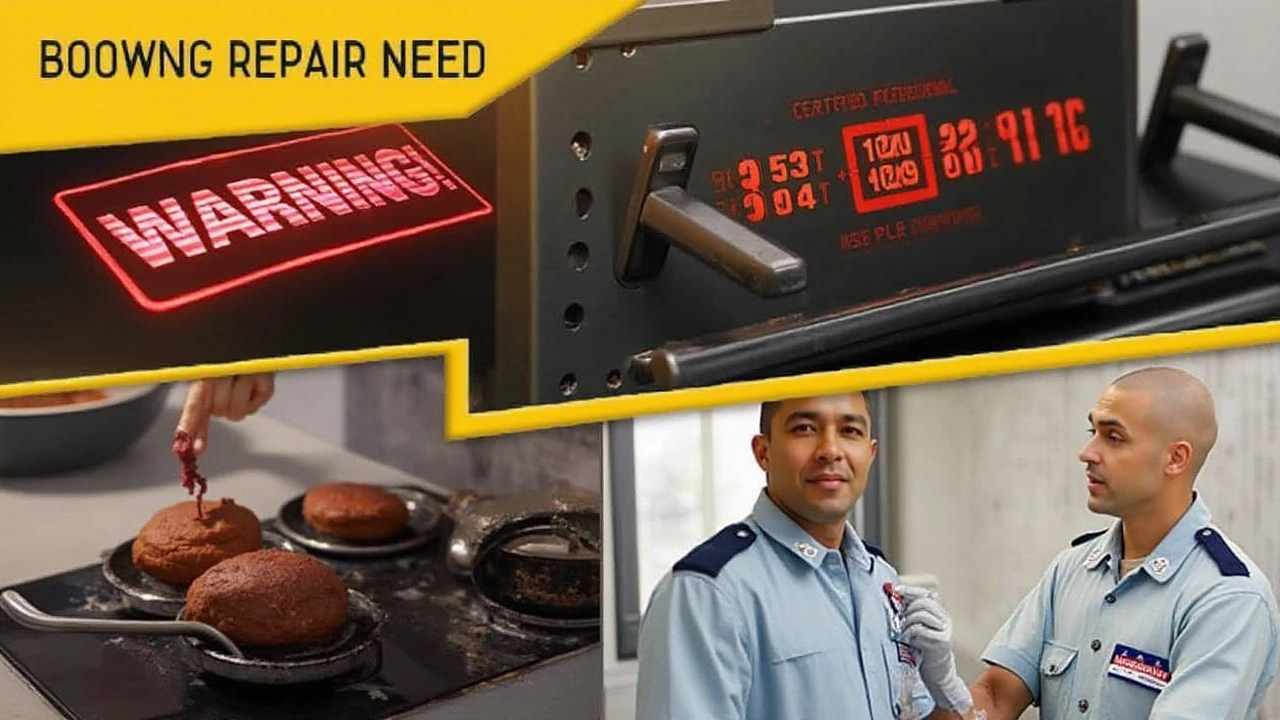
Maintenance Tips for Longevity
When it comes to keeping your electric hob in pristine condition, regular maintenance is key. An electric hob isn’t just an appliance; it’s an investment in your kitchen’s functionality and your culinary adventures. To ensure it serves you well over the years, begin with the basics: cleanliness. It's imperative to clean the hob after each use, as food spills can not only damage the heating elements but also lead to unwanted stains. Use a soft cloth and a mild cleaning agent specifically designed for hobs to wipe the surface. Avoid abrasive materials that could scratch the hob's surface.
Heat efficiency plays a major role in the longevity of your electric hob. Make sure to use cookware that matches the size of the hob’s burners. This prevents heat from escaping and minimizes undue stress on the hob's components. Educating yourself about the hob’s settings and controls can significantly extend its life. Each brand or model of hob often has unique features designed to optimize energy use and enhance safety—familiarize yourself with these settings by consulting the user manual.
Routine Inspections
Another aspect of hob maintenance involves regular inspections. Examine your electric hob for signs of wear and tear or potential problems. Look out for any fissures on the surface or any indication of faulty wiring, as these could be signs of serious issues that need addressing. If neglected, such problems can lead to overheating or a total breakdown. Conducting these checks yourself is a straightforward task, yet if you spot anything worrying, it might be prudent to involve a professional.
"Preventive maintenance is a key factor in eliminating unscheduled equipment failures." – John Maxwell
Consider investing in a surge protector if you live in an area with frequent power fluctuations; this can safeguard the electronic components of your hob. It prevents fluctuations from causing irreversible damage to the internal circuitry.
Replacing Worn Parts
Finally, don't shy away from replacing worn-out parts when necessary. Parts such as the knobs, elements, or indicator lights may wear out over time. Replacing these not only ensures that your kitchen appliance remains functional but also that it looks fresh and kept up. Ignoring small faults might seem cost-effective in the short term, but proactively replacing faulty elements can save you a lot in future repair costs.
For a detailed guide on which replacement parts are compatible with your specific model, consult the manual or reach out to the manufacturer. This little bit of extra care can make a significant difference, keeping your electric hob operating smoothly and extending its usable life.


